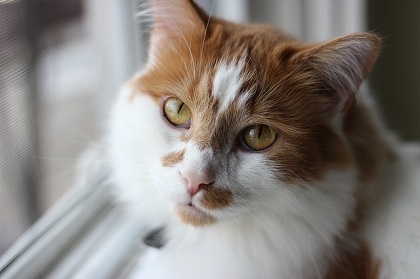Cats and Hypertrophic Cardiomyopathy
Cats and Hypertrophic Cardiomyopathy
Hypertrophic cardiomyopathy in cats is the most common cardiac disease that affects cats. It usually appears in middle-aged cats, but there are cases of young cats with developed hypertrophic cardiomyopathy (HCM). According to feline experts, there is no single cause for HCM. Namely, the disease is usually hereditary and affects certain cat breeds, such as Ragdolls and Maine Coons. These two breeds have the genetic mutation in a cardiac protein, myosin. Several other breeds are also prone to hypertrophic cardiomyopathy – Burmese, Sphynx, Persians, Devon Rex and Himalayan. Experts claim that domestic cats can develop this cardiac disease, as well. However, they are more resistant and usually suffer from HCM in their senior years. But, what is hypertrophic cardiomyopathy? And, how serious is it? Hypertrophic cardiomyopathy affects heart ventricles through thickening their walls. That thickening prevents ventricle to relax and pumps blood in a regular manner. Thickening prevents heart to eject enough blood, thus affecting the whole blood stream. Cats who have a mild form of the disease, do not show any significant sign or symptom. But, when the disease progresses, it can result in problems with hind legs, accumulation of water in the lungs, thromboembolism, collapse and even death. For this reason, it is extremely important to take care of diet and exercising in cats, especially if they belong to one of the breeds with the highest risk. To find out more about symptoms that point at hypertrophic cardiomyopathy in cats, the article “Heart Disease (Hypertrophic Cardiomyopathy) in Cats” gives us the following list.
Cats and Hypertrophic Cardiomyopathy
Loss of appetite (anorexia)
Lethargy
Weak pulse
Difficulty breathing
Short, rough, snapping breathing sounds (crackles)
Abnormal heart sounds (i.e., muffled, galloping rhythm, murmurs)
Inability to tolerate exercise or exertion
Sudden hind-limb paralysis with cold limbs due to clot in the terminal aorta
Bluish discoloration of foot pads and nailbeds (indicates a lack of oxygen flow to the legs)
Collapse
Sudden heart failure
Hypertrophy myopathy can appear as a result of some other disease, as the secondary disease. It usually accompanies hyperthyroidism and high blood pressure. The prognosis can extremely vary from cat to cat. Cats who show no symptoms have a good prognosis, because a lack of symptoms suggests a mild form of the disease. However, cats who have water accumulation in the lungs, breathe with open mouth, show signs of labored breath and have problems in their hind legs are considered patients with severe HCM and their chances of survival are poor. The most we can do for our cats is to help them with a healthy diet and regular exercise.










